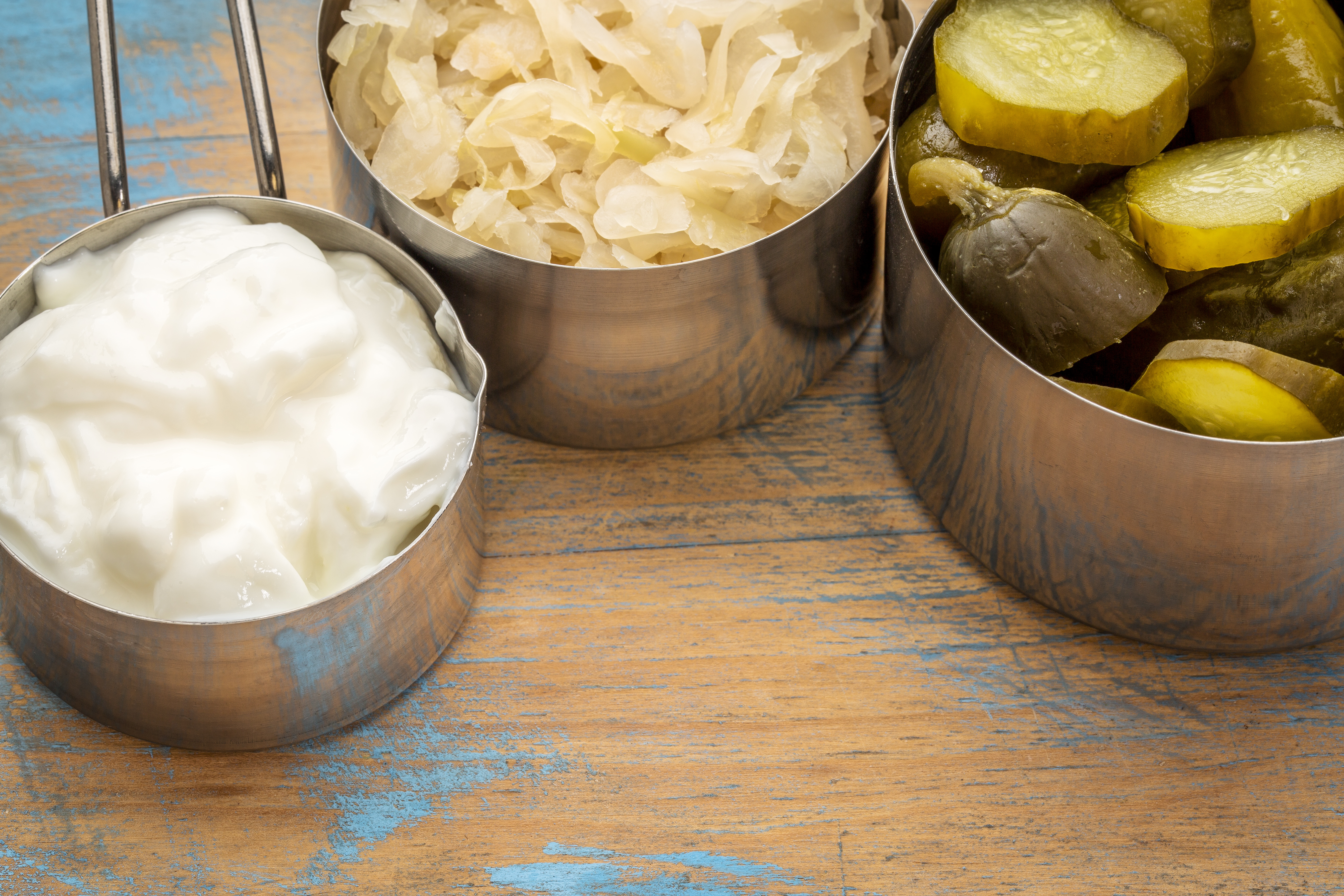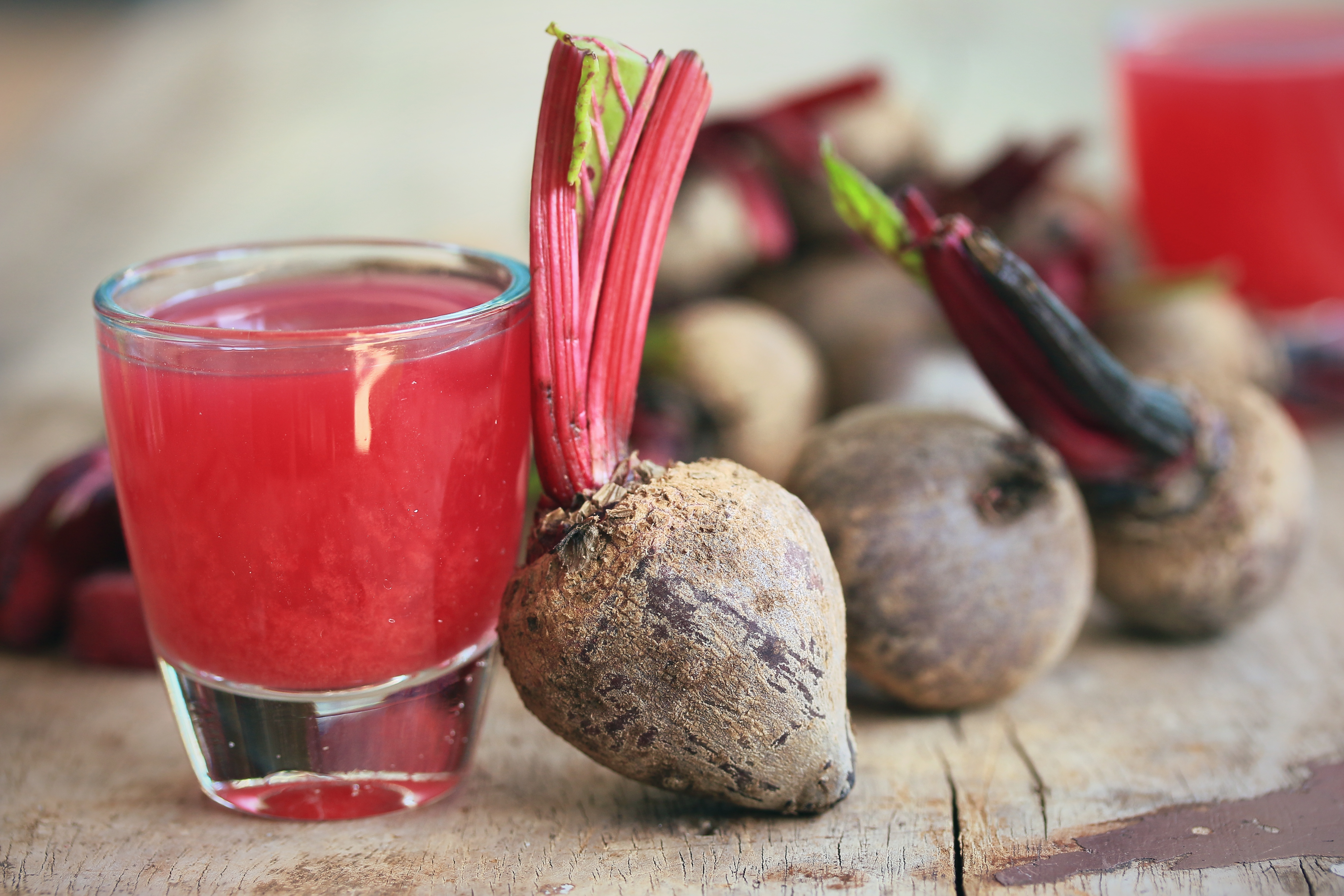Creating Probiotics With Fermented Foods- The Friendly Bacteria
Published: Wed, 09/28/16
September 28, 2016
Creating Probiotics With Fermented Foods - The Friendly Bacteria Penelope Thompson, M.H.

Germ: a microorganism, especially one that causes disease. In the US, the word “germ” often insinuates potential harm and leads many to believe that all germs are dangerous and are just organisms ready to cause infection to the unsuspecting. And so naturally, what is seen as harmful is often avoided or even destroyed. Whereas, in some parts of the world, many people consume fermented or “cultured” foods – an age-old process used to preserve foods and to make them more nutritious and digestible. For our purposes in this essay, “culturing” is the sense of growing beneficial bacteria (or germs).
Fermentation is the process by which a substance is transformed through the activities of bacteria, yeasts and other microorganisms into strains of bacteria that is beneficial (probiotics) to our health. The term probiotic comes from the Latin word pro, meaning “before” or “forward”, and bios, or “life” — thus probiotics are life-improving bacteria.
Probiotic organisms can produce various substances including alcohol, lactic acid, and acetic acid, all natural preservatives that can help to retain nutrients and prevent spoilage of these foods.
Alcohol is produced in the transitional phase of fermentation, where yeasts break down and convert carbohydrates into ethyl alcohol and carbon dioxide. The bacteria that naturally exist in the air, continues the process and turns the ethyl alcohol into acetic acid. It is the production of acetic acid that is responsible for the sour taste of vinegar, pickles, sauerkraut and some favorites.
Lactic acid producing bacteria help acidify the gastrointestinal (GI) tract, creating an environment favorable to the growth of healthy bacteria. Some of the common beneficial strains of bacteria found in fermented foods (Lactobacillus acidophilus, Lactobacillus bulgaricus, and Bifidobacteria), colonizes our GI tract and have been proven to be important bacteria in human ecology.
Some popular (or traditional) fermented foods that you may recognize include; yogurt, cottage cheese, kefir, kombucha, pickle, sauerkraut, kimchi, sourdough breads, miso and kvass.
With today’s busy and fast-paced schedules, these foods are more important than ever for our daily health habits. The balanced flora of our GI tract operates in a symbiotic relationship between good and bad microorganisms that fermented foods can play an important role. Eating live fermented foods is a health practice to help keep the GI tract flora in balance. Some of the many benefits of consuming probiotic foods include:
· Improves digestive health
· Improves skin conditions, like eczema
· Improves urinary and vaginal health
· Improves oral health
· Helps prevent allergies
· Helps stimulate the immune system
· Helps balance a healthy body weight
Penelope Thompson is a Master Herbalist graduate from the School of Natural Healing.
Printable Version: http://www.herballegacy.com/
If you missed an article be sure to visit http://www.herballegacy.com and click on Articles. Also, take advantage of David Christopher's Radio Show (see Resource Links below for more information).
 Simple Beet Kvass
Simple Beet Kvass
Makes about 1 pint
Ingredients
Approximately 1 large or 2 small beets (enough cubes to fill a quart jar halfway)
2 teaspoons sea salt
Water (preferably steam distilled)
Optional flavorings: 1 tsp cubed ginger, 1 tsp lemon peel, 1 tsp orange peel
Instructions
- Scrub the beets. Trim the tops and tails, but if they are organic leave the skins on.
- Cut the beets into 1/2” cubes.
- Place the beets in a clean quart size jar.
- Add salt to the jar. You can also add the optional flavorings.
- Cover the beets with water, leaving at least 1” of headspace at the top of the jar.
- Cover the jar tightly. Let the jar stand at room temperature. You may see bubbles inside the jar and brine may seep out of the lid. This is a good sign, but open the jar to (“burp”) release the built gas. You don’t want a jar explosion of beet juice…trust me!
- Open the jar once a day to taste the liquid and release gases produced during fermentation. If any mold or scum has formed on the top, simply skim it off, it’s still good.
- When it tastes strong enough for your liking, strain out the beets and transfer the kvass to the refrigerator. You may drink it right away, but it's often best after a few days in the fridge. I like mine after 2 weeks in the fridge, it develops a smooth flavor.
- With the leftover beets you can add brine (salt and water) back to it for a 2nd ferment batch. It may take an additional day or two. Just repeat the above process.
- This will last in the fridge for at least a month or longer, but you should be drinking it☺
Recipe by Penelope Thompson
Printable Version: http://www.herballegacy.com
Herbal Resource Links
- Herbal Legacy - http://www.herballegacy.com - Our free information website
- The School of Natural Healing - http://www.snh.cc - Quality Education since 1953
- Christopher Publications - http://www.christopherpublications.com - Dr. Christopher's books and more
- Christopher Websites - http://www.christopherwebsites.com - Find all Christopher websites and other great resources
- A Healthier You Radio Show - http://www.ahealthieryouradio.com - Free weekly radio show
The School of Natural Healing: http://www.snh.cc
Christopher Publications: http://www.christopherpublications.com
NOTICE: All information in this newsletter is given out as information only and is not intended to diagnose or prescribe. For our official Disclaimer, Biological Individuality, Important Notice & Terms of Use please see: http://www.herballegacy.com/Disclaimer.html
This newsletter is sent by permission only - you can unsubscribe quickly and easily by clicking the link below.
.



